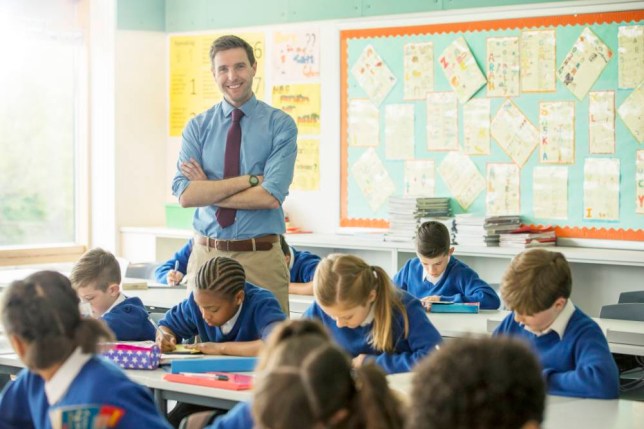Today’s Date is above the whiteboard, the title of the lesson in the middle, the tree of elements and their varieties occupy every inch of them in different bright colors; the flag is fluttering, the bell is next to it, and the questions from the teacher are prompted by immediate reactions;and his passing between the rows to make sure that everything is well.
This elongated stereotype of schools around the world was absent as soon as March 2020;
Silence and remote education were resolved as an alternative to live-to-school learning for fear of an outbreak of the Coved-19 epidemic among students,
This has led to a wide confusion among school departments and teachers, including even university halls; it is imperative to provide modern “online” methods for delivering courses
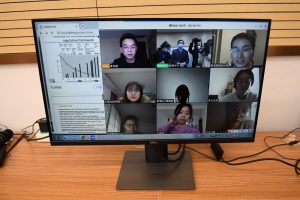
remote learning-tb: others
Speaking to students through group rooms, including “Zoom”, and following up on their commitment and evaluation, processes that most of the world’s teachers have not been adequately trained, even in the world’s oldest countries in the field of education, not to mention the low wages of teachers, which make many of them reluctant to develop their performance and learn newer strategies.
The following lines, during which we approach the testimonies of educators and international experts in education about crises and lessons revealed by the experience of distance learning for teachers and how to overcome them, and most importantly: how will you completely change the role of teacher in a few years?!!
Various experiences
schools have been divided in terms of readiness, between those who decided to close the page despite the continuation of the study on paper and those who gathered to complete it; Even the second team, of course, is divided into those who merely provide the lesson plan and the simplified written or recorded audio explanation, from circulating prepared explanations of decisions via YouTube, and Who decides to create an interactive situation, feedback from students and reactions by activating the group chat rooms between the teacher and his students, organizing and benefiting from the mechanisms of work, which are the most effective and approaching the nature of learning within the classroom.
The latter method is more intimate: the teacher actually wears loose, comfortable clothes, sits on his favorite sofa, sipping his drink, having fun and exchanging some jokes as well, which is why some believe that:
the Coved-19 crisis with education is practically linked to our readiness to receive the crisis and think about how to generalize alternative education remotely in difficult times.
Newspapers around the world are full of successful experiences of teachers who have devised dozens of ways to communicate live and overcome the difficulties of interaction remotely, including not being sure that everyone is absorbed to the required degree, or the absence of some students from following up on their commitments to study, or even technical problems in sound, image and synchronization; There are schools and universities that have decided to broadcast real classes from within the classroom so that the student feels the same atmosphere as understanding.
Home and school. Strengths or weaknesses
Erin Lenian, a head teachers, according to the New York Daily News,he see that virtual learning supports the real partnership between the school and parents, and makes the latter be able to see, evaluate, participate effectively and communicate with teachers, especially in the years of basic learning.
but this point -she said- is a double-edged weapon, as many parents do not have the time or educational background to play this role!!
On the contrary, according to the popular Inside Hyer Ed blog, Doug Lederman reflects on the plight of student dropouts in what he describes as “digital cracks”, and has made sure that most students are not actually regular in internet lessons, for different circumstances, and communicate with teachers who complained about the same crisis, says Shahida Khan Payne, a school counselor.
The educational adviser tends to expand the scope of e-learning drop-outs among low-income students and minorities of color in her country, the disabled, homeless students or in public housing who are at greater risk of learning deprivation.
According to another teacher, students lack the feeling of school protein, waking up early and dividing time, these things are connected psychologically to commitment and a sense of duties toward learning, and vice versa in the case of staying at home and what it means to lose the sense of time gradually and drift to video games and YouTube and postpone tasks day by day.
“The truth is, for some families, because they have all these other things to survive, the school is not on the list of priorities,” says one teacher. This is understandable.” “When you’re worried about where you and your family will live, or how you’ll pay your bills, that should be your priority.”
Mixing digitization or.. Backwardness
Based on the results of the TALIS Global Education Survey, technology should have a much larger role in the classroom. According to the study, only 60 per cent of teachers received training in professional development in the use of technology.
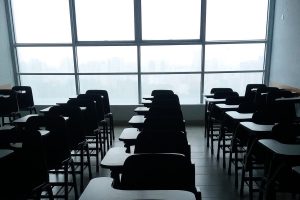 According to Forbes magazine, the new system has forced everyone to adapt to distance learning that requires new tools, and the teacher who ignores it will have no place in the next scenario, an interactive participatory education that not only measures What students have earned, but how they use it for persuasion and practical application.We will see “complex systems consisting of participation, course work, projects, individual and team work, grades that are assigned by colleagues, not just the teacher, and perhaps several other criteria.””
According to Forbes magazine, the new system has forced everyone to adapt to distance learning that requires new tools, and the teacher who ignores it will have no place in the next scenario, an interactive participatory education that not only measures What students have earned, but how they use it for persuasion and practical application.We will see “complex systems consisting of participation, course work, projects, individual and team work, grades that are assigned by colleagues, not just the teacher, and perhaps several other criteria.””
School administrations will have to provide video conferencing tools that enrich two-way interactions, shared whiteboards, instant messaging, content managers that we will use as repositories, and virtual reality that offers immersive experiences, simulations, games of different genres. A set of functions that will constantly evolve throughout the lives of students.
In other words, online teaching will not just be an option. In the coming year, institutions unable to deliver a mixed methodology that integrates the smoothness of face-to-face teaching and the Internet will increasingly find themselves lagging behind.
YouTube is not a substitute for the teacher
Evan Greenberg confirms in “Baltimore” magazine that just as today’s parents are unlikely to see television as just a babysitter, the same applies to YouTube videos even those from a supposedly educational video. For one thing, small hands can click on links and stay away from the content to be provided. For this “With any use of technological tools, parents should consider monitoring content, as far as possible, especially with younger children, and participating in viewing alongside them, suggested Priya Driscoll, associate professor of early education at Mills College.
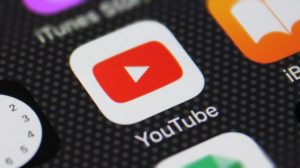 As an educational tool, YouTube can be used in a variety of ways, depending on a child’s age and educational goals.” for preschool or primary school-age children, a tool like YouTube can be seen as a supplement to reading or lesson, rather than being the primary source of content. For example, children who read about animals can view videos of some of these animals to learn more about what they look like, how they move, and where they live.”
As an educational tool, YouTube can be used in a variety of ways, depending on a child’s age and educational goals.” for preschool or primary school-age children, a tool like YouTube can be seen as a supplement to reading or lesson, rather than being the primary source of content. For example, children who read about animals can view videos of some of these animals to learn more about what they look like, how they move, and where they live.”
For older children, YouTube can allow students to engage in a deeper topic. For example, show interviews with people from all over the world to complete a social studies class,” Driscoll said.
“Research also tells us that children can demonstrate enhanced video learning through interactive shared viewing with parents, compared to individual viewing.”
For older students — as well as adults who may suddenly have more time on their hands — YouTube can also be a place to hone skills, but it may require more dedication than many younger children.
“YouTube is an excellent resource for self-guided learning, especially when it’s about skills development,” said Oliver Croco, assistant professor of leadership and human resources development and coordinator of the Online Learning Experience Design and Innovation Program at Louisiana State University online.
Training intelligence for students
According to a report published at the World Economic Forum:
our current education system, is based on conservation and standardization – skills that will be easily and efficiently replaced by artificial and enhanced intelligence (AI), where intelligence alone is not enough. A good combination of intelligence (intelligence) + EQ (emotional intelligence) + RQ (flexibility) is critical to unleashing a student’s potential.
Statistics show that 34% of students believe that their schools do not prepare them for success in the labor market, says the expert, aware: We need to fix the bridge from education to employment, according to the WEF Futures Report.
“We need to prepare students for jobs that have not yet been created and become entrepreneurs.” That is why the role of the teacher will change and what we need to learn so much.
Access and equity gap in learning
Of course, as we transform education, we also need to make it more accessible.
According to UNICEF, more than 72 million children of primary school age are out of school, while 750 million adults are illiterate and do not have the capacity to improve their living and children’s living conditions. As we take care of the transformation process in education, success means providing (access, equity, quality/impact).
According to the World Economic Forum, David Edward also points to the fact that at current rates, if we continue to achieve the same rate of progress, by 2030 this number will have fallen by only 32 million students, and we will have missed the target by 88 per cent.
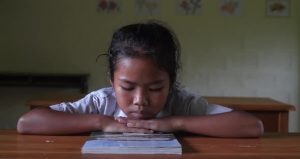 The United Nations also reported that nearly 69 million teachers worldwide must be recruited by 2030 if international commitments on education are to be met.
The United Nations also reported that nearly 69 million teachers worldwide must be recruited by 2030 if international commitments on education are to be met.
This comes against the backdrop of the privatization of education, by reducing funding for public education, which accelerates inequality by excluding the vulnerable from access to quality education.
When the Coved-19 crisis is over
The idea of a educator as a knowledgeable person who transmits wisdom to his pupils is no longer valid for the purpose of education in the twenty-first century. With students’ ability to access knowledge, and even learn technical skills, with just a few clicks on their phones, tablets and computers, we’ll need to redefine the role of educators in classrooms and lecture theaters.
This may mean that the role of educators will need to move towards facilitating the development of young people as contributing members of society.
Education expert Nyam Sweeney (Teacher of Health, Social Welfare and Criminology at Cambridge College) says:
When the epidemic crisis ends, the education profession must rise to the challenge; we need to ask ourselves the basic question: What is the purpose of education?
we cannot continue to have a system of nearly 3,000 children with special educational needs and disabilities who lack a permanent school space. We cannot continue with the examination system, which leaves one third of pupils described as failing.
 The use of education as an ideological and political football must be put to an end. We cannot continue with a toxic exam system that is based on rotten learning, outdated curricula, and an examination system that has been responsible for a significant rise in mental health illnesses for children and adolescents.
The use of education as an ideological and political football must be put to an end. We cannot continue with a toxic exam system that is based on rotten learning, outdated curricula, and an examination system that has been responsible for a significant rise in mental health illnesses for children and adolescents.
Our education system must recognize the achievements of all and must continue to describe those who follow the path of vocational education as less worthy or less valuable, or their qualifications less rigorous.
We must end education and practice schools competing against each other for pupils, and we must use the situation we face now to end child poverty, inequality in education and the wider community.

